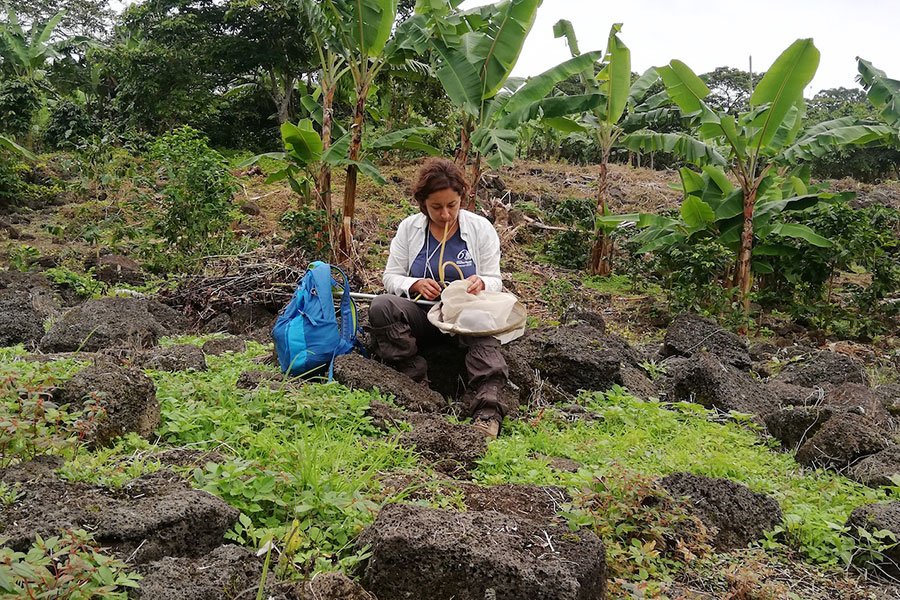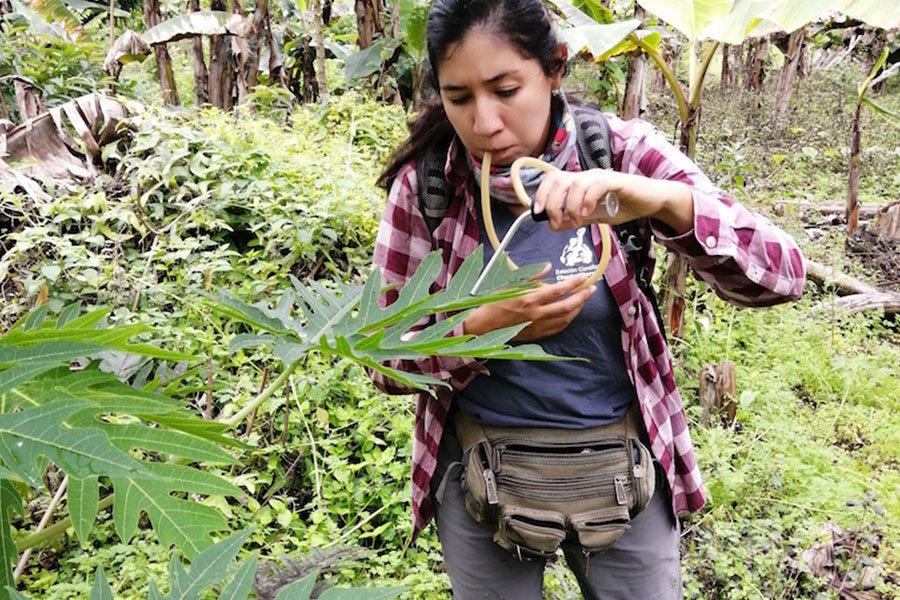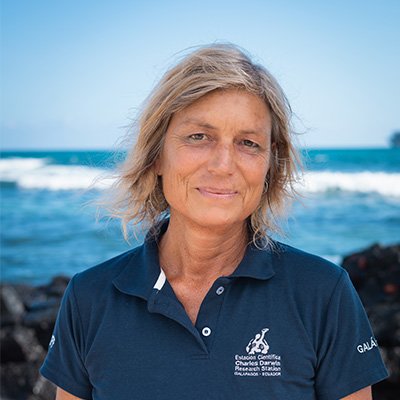
Getting to know the plants and insects on farms on Santa Cruz, Galapagos
Agriculture production started in Galapagos at the beginning of the 20th century and is now being practiced extensively on the four inhabited islands. Even so, there is limited information on the biodiversity of the agricultural areas. Most research in Galapagos so far has focused on the protected area and little is known about the number, abundance and distribution of plant and insect species outside of this area. Furthermore, there is limited information on the presence of invasive species and their impacts on the agricultural production. To ensure the sustainability of human life and biodiversity conservation in Galapagos, it is essential to learn more about the terrestrial biodiversity and the interactions with social-ecological systems.

As a start to narrow this knowledge gap, in 2016, 72 farmers on Santa Cruz (20% of all farms) took part in a survey on invasive species, to determine which were most prevalent within their farms. They reported which invasive species they have observed, how much of their farming land is covered by them, and what they do to control these species1. In addition, in 2018 and 2019, over 40 farmers, who own a total of about 497,15 ha, signed the ‘Conservation Agreements’ (CA) with Conservation International Ecuador (CI-Ecuador) and the Ministry of Agriculture and Livestock, Galapagos District Directorate (MAG), to promote the integration of current agricultural practices with conservation actions.
To narrow this information gap even more, the Charles Darwin Foundation (CDF) teamed up with CI-Ecuador and MAG. TJacqueline Rodríguezhe result is a new project “Knowing more, governing better: marine and terrestrial system dynamics towards Galapagos sustainability”, funded by the Gordon and Betty Moore Foundation, that will consolidate and expand the existing information.
In the terrestrial part of this project, we are focusing on plants and insects, since these are most affecting endemic and native species, as well as the local agricultural production. We aim at establishing a baseline for plant and insect biodiversity in the agricultural area and to identify priority sites for conservation activities on the 40 farms participating in the Conservation Agreement on Santa Cruz. In addition, we are recording the presence of key terrestrial species, including birds and reptiles (both endemic and invasive), and identifying the interactions of invasive species with crops.
As soon as restrictions due to the Covid-19 pandemic were alleviated in June, CDF entomologists Jacqueline Rodríguez and Julia Bolaños, and Carlos Masaquiza, entomologist of the Biosecurity Agency (ABG), as well as the CDF botanist Anne Guézou, moved out to explore the agricultural areas, in collaboration with CI-Ecuador and MAG. By now, they have visited more than 28 farms in the different communities of El Cascajo, El Camote, Bellavista, Media Luna, Los Guayabillos, El Occidente, El Carmen and Santa Rosa.

Jacqueline and Julia are able to witness the challenges the farmers face to ensure that the daily produce reaches our tables. For example, the tropical fire ant Solenopsis geminata represents a threat to the plant and animal production on the farms and is a major nuisance to the family, as are the yellow and black paper wasps (Polistes versicolor and Brachygastra lecheguana). But their work also allows them to observe and record all the beneficial insects, like the Galapagos carpenter bee (Xylocopa darwini) that is pollinating the flowers of agricultural crops, or the spotless ladybug (genus Cycloneda) that feeds on the aphids and scale insects, harmful to the agricultural production. They observed the giant Galapagos long-horn beetle (Stenodontes molarius galapagoensis) collecting and recycling plant and animal debris that will serve as fertilizer in the future.
Regarding the plant inventory, Anne typically encounters between 60 and 170 plant species per farm, depending on the size of the farm and the cultivated crops, including endemic, native and introduced species. The more different habitats there are, the more species she finds. These include useful plants, grown either for consumption, medicinal or ornamental purposes, hedges or as a wood source. So far, she has only found a few species that had not been recorded during the last inventory of introduced plant species on Santa Cruz in 20072 or later.
The team is also recording endemic bird and reptile species on the farms, including several species of finches and the Galapagos mockingbird. In the more humid areas, the Galapagos rail is fairly common, and the Galapagos dove can also be seen, although less than in the past. El Camote is the nesting area for the Galapagos petrel and giant tortoises can be seen here, as well as in the lower parts of the agricultural areas. All farmers reported rats to be the most detrimental non-insect species on their farms.
“Working with the farmers in this project has been, and still is, a very positive and gratifying experience,” Jacqueline, Anne and Julia point out. “We are always welcomed by the farmers, they take their time to answer our questions, share their concerns, their knowledge, show us some specific parts of their land or productions and help us locate the farm boundaries. They very much appreciate receiving information about insects and plants on their farms.” As María Elena Guerra from the farm Lava Java puts it, “After 15 years of trying to restore 15 ha of heavily invaded farmland, it is great to have an expert scientific assessment that can give as a better understanding whether we have been successful at our efforts and that provides us with a list of plant and insect species found on our farm.”
Once the information recorded on the farms has been systematized and is ready for dissemination, presentations and workshops will be held in the different sectors of Santa Cruz to share the acquired information and knowledge. In addition, farmers will receive detailed information about the plant and insect species found on their property.

The collaboration with MAG and ABG will allow to expand the generated information and enable more efficient detection of the needs of the agricultural sector and possible solutions. This information will be available through an easy-to-access platform to support the decision-making processes of local stakeholders. The outcomes of this project will help develop and implement enduring sustainable development strategies for agriculture in the Galapagos Islands.
Acknowledgments
We would like to thank the Gordon and Betty Moore Foundation for financing this project, which is a collaboration of Conservation International Ecuador and the Charles Darwin Foundation, with the participation of the Ministry of Agriculture and Livestock, Galapagos District Directorate and the Galapagos Biosecurity Agency. In addition, we would like to thank the producers of the farms on Santa Cruz for their help, time and valuable information provided.






